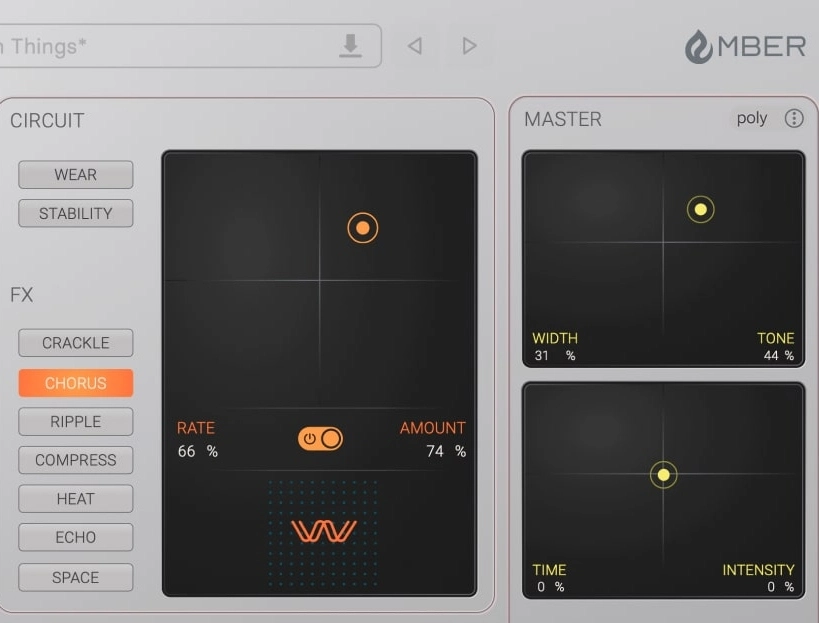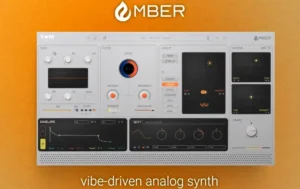Yum Audio has recently released its new plugin, Ember. This is a synthesizer, and with its new features and the user interface, it can make its space among the top-notch plugins.
This blog will delve into the introduction and key features that set EMBER apart in the crowded market of virtual instruments.
At the end of this blog post, I will also share my first look review to help the music producer community. So, without wasting any time, let’s get started.
Introduction:
This VST is not new software that introduces new sounds to the market. It is a synthesizer that combines the flexibility of analog and modern digital plugins. It also focuses on delivering warmth and character to the output.
Many newly released plugins mainly focus on making their interface very complex, showing the public that something new has arrived. On the other hand, this plugin focuses on making the interface less complex and suitable for newbies to dive into the sound design without worrying about the complexity.
Intuitive controls and visual feedback also play important roles in making the user interface more user-friendly.

Key Features of AMBER :
Here are the key features of the
Rich Oscillator Section:
Oscillators are the heart of every synth, and this one is no exception. This plugin makes oscillators play an important role in sound design by providing three distinct waveform options: square, saw, and triangle.
The pulse width and frequency modulation controls can customize/modify each waveform. If someone wants to add depth and character to the sound, he can also blend in sub-oscillators. These suboscillators can add depth to the sound by adding a layer of low frequencies.
Pulse rate modulation can add vibrato/movement to the sound.

Innovative Circuit Section:
Almost the full potential of this tool is dependent on the circuit section. The main purpose of this section is the tone manipulation.
After passing through the oscillator, the sound passes through the circuit section, where the tone of the audio signal is altered. Now, the question arises about how the circuit section alters the tone.
The circuit section includes various effects, including crackle, chorus, delay, ripple, heat, echo space and reverb. These effects can be applied to the audio in real time to change the tone. This circuit section also adds analog-like characteristics to the sound with the help of saturation and drift controls.
As we all know, saturation adds different harmonics to sounds. On the other hand, the drift function tries to mimic the imperfections of analog devices by introducing slight variations in the pitch and timing of the audio.
The other main feature of the circuit section is the XY pads. These XY pads control the signal’s width, tone, time, and intensity. With the help of these XY pads, users can make sweeping changes to their sound with simple gestures and fine-tune their sounds.
Two main functions are wear and stability in the top left corner of the circuit section. These features can add the detuning effect or stimulate sound degradation over time, adding a layer of authenticity and character to synthesized tones.

FM Modulation:
FM modulation is also used in this Ember plugin. This technology is used to produce the complex harmonics textures. With the help of this, user can modulate the frequency of one oscillator with the frequency of another oscillator.
It would result in rich sounds that will evolve with the time. This technique is mostly used to make bell tones, metallic sound etc. which can be obtained with the traditional subtractive synthesizers. This is also one of those feature that enables this plugin to get a space in the production of every genera.
Built-in Arpeggiator:
An arpeggiator is also available in this plugin along the envelope. It helps the user to create the rhythmic movements in the audio generated by the plugin. User can create different patterns of melodies with this features and they can customize parameters such as note order, duration, and swing, enabling them to generate intricate melodic lines effortlessly.
With the help of this feature, user can transform various chords into the dynamic sequences that enhance the overall musicality of their tracks.
Key Tracking Capabilities:
The Key tracking capability of this plugin is present to enhance the sound design flexibility and expressiveness. This feature allows the cutoff frequency of the analog-style low-pass filter to adjust the pitch of the currently played notes. It would result in more musical response that retains tonal coherence across different pitches.
When the higher note is played, the filter opens up to higher frequency and higher frequency will be heard or vice versa.
This key tracking feature can also be accompanied to the other options such as the LFO and etc. It allow the user to design complex modulations for more interesting sounds.
Preset Library:
The plugin’s preset library is also vast. This tool consists of many presets, 130 in this case. These presets consist of basses, arpeggios, pads, etc. They are also optimized for EDM, Jazz, Hip-Hop, etc.
These presets can be a great source of quick sound selection.
Randomization Feature:
Sometimes, the user faces a stall or artist block, which is very common. To tackle this problem, this plugin also has randomization features.
This feature randomly generates new sounds based on the user’s taste when he records over time by tracking user habits.
This plugin also has an envelope section, with which the user can set the attack, decay, and release time of the audio signal.
First Look Review:
I have used this plugin, and here is my honest review. It is not sponsored or affiliated with Yum Audio. I am writing this review to help producers interested in this plugin.
This review is based on my personal experience. What worked for me may not work for you.
Pros:
- The sound quality of this plugin is strong. The expressions, characters, and tonality of the sound are very good. It truly adds value to the song. In this regard, the whole credit goes to the oscillators of this plugin, which, if used correctly, can produce depth in the sound.
- The next thing I like about it is its interface. Yes, the interface is very simple and effective for navigation and has an easy sound design.
- The next item on the list is the presets. Normally, plugins have common-sounding presets in their library. But in this case, the plugin has impressive presets, which can really be a strong source of inspiration and hands-on MIDI keyboard experience.
- I loved this plugin mainly because of its unique features, such as the circuit section and XY pads, which were explained above in the article. These features allowed me to experiment with the different plugin settings.
- Yum Audio claims to provide regular updates to this plugin. It is also a plus point.
Cons:
Every picture has two sides. In the same way, every plugin has pros and cons. While using this tool also has cons along with the pros. They are listed below.
- This plugin is not designed for low-end computers. It consumes resources, which may cause performance issues.
- Although the plugin is simple, it can be difficult to fully utilize some advanced features, like the circuit and envelope sections.
- The price of this plugin is $129, which could be challenging for some users because plugins of almost the same ability are available at low prices in the market.
